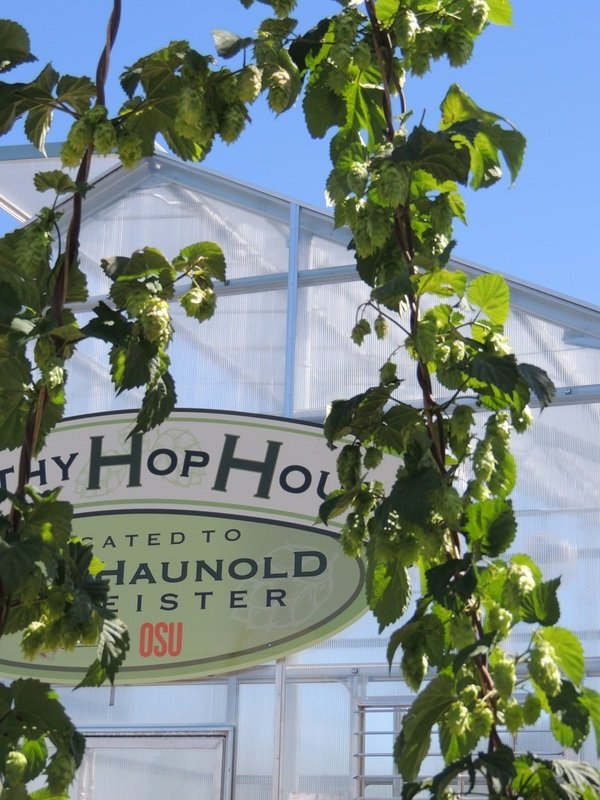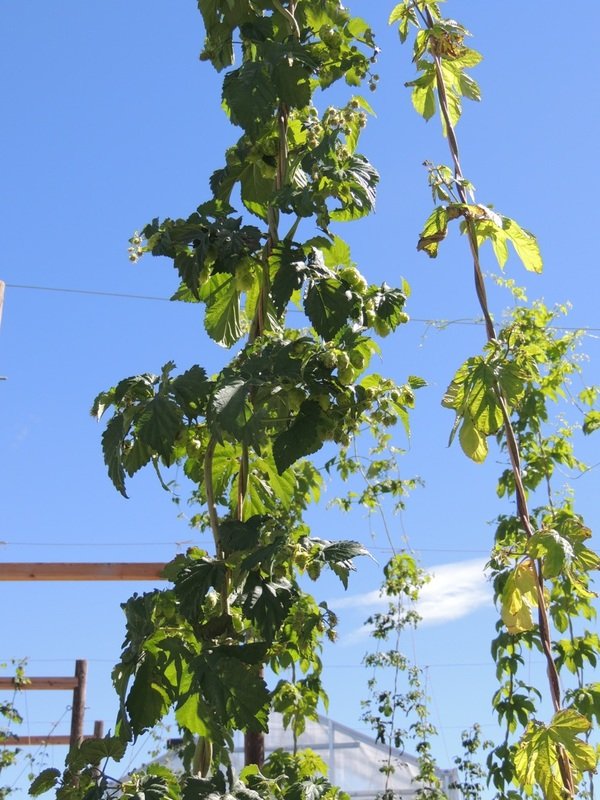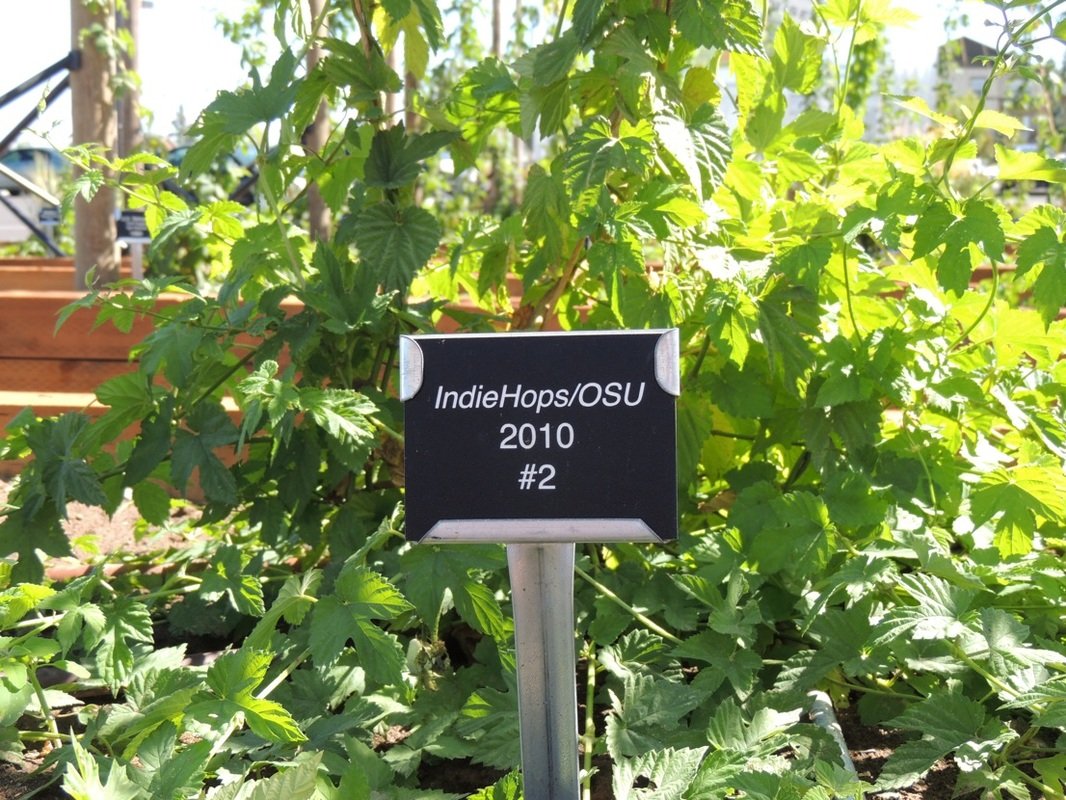Grow Baby Grow!
Wed, 28 Aug 2013 18:55:00
They’re going off. Our little green girls are starting to explode. Such vigor! Such Force Vitale! Such yearning for the…. male pollen.

Ahem. Well, that’s what usually happens. After a slow start – we just transplanted our 23 hop varieties in late May – our noble flowers are hungry. They’re awash in hot sunlight. They’re thriving in plenty of water. They're bursting with the yellow lupulin nectar. So what are they hungry for?
Pollen
Pollen. Nature designed Humulus Lupulus to grow and grow fast at this stage of their reproductive cycle. They sense imminent fertilization and are pouring their energy into more and fluffier cones, longer sidearms, and the prospect of fertilized seeds.
Alas, our nubile nymphs will have to wait. It's conceivable that a stream of wild type male hop pollen may waft in over the Cascades, or from a nearby garden, and do the deed. I guess it’s possible. But their loss is our gain. Worthy plans on harvesting and brewing with these veritable beehives of hop honey, and the presence of seeds can spoil the fun.
Fun Fact!

Here's a Fun Fact Detour: Did you know in many countries it’s illegal – verboten! – to grow male hop plants within a few miles of commercial hopyards? I don't know if the hop cops will throw you in jail, but exposing those fertile flowers to the male mist is a crime of sorts. The reason? Brewers do NOT like seeds. They give off nasty flavors. Hop merchants, as well as brewers, will specify with growers that the seed content shall be less than a few percentage points of the total weight. We can try to deter knuckleheads, but generally a portion of a yard will get "impregnated," as we can’t stop Mother Nature from sewing the seeds of procreation.
Worthy Pride
Here at Worthy we are proud of our girls. 2013 has been designated as our “establishment year.” Hop farmers as a rule don’t string their plants in the first year. Instead their focus is on developing the root system of the fresh crop. They’ll typically let the hops grown a few feet and then prune. We decided to string our hops because we were curious how they’d grow in East Bend in the special imported soil we’re using inside their raised beds. Also, we wanted to check out the variation between the 20 plus cultivars.

Our conclusion: Amazing! The Chinooks are simply exploding. We measured cones 2.5 inches long and an inch wide. Big as a beehive! The Crystals, Cascades, Meridian, Santiams and Centennials have also shown incredible robustness. We can't wait to brew with these organically grown beauties. We now have three systems we can test them with - the master 30 barrel brew system, the 5 bbl pilot, and our trusty home brew system. Chad, Dustin and Jacob are champing at the bit to pluck and toss our Worthy hops into the kettle.
Baby Year
Is vigorous cone development, or lack thereof, a predictor of the size of the yield in the “Baby Year,” i.e., the first year of harvest? Not necessarily. Our Goldings, Ultras, and Perle may not be sprouting as generously as the heat-loving Chinooks, but this is no reason to conclude our slow starters will underperform in their mature year (the 2nd harvest year). That’s what’s so cool about hops and plants in general – they may belong to the same species, but there’s big differences in their size, color, cone shape, disease resistance and yield. Even the location of the plant in relation to the sun can influence the cone and side arm development.
Next time you’re at Worthy, please feel free to take a tour of our hopyards. We’ve identified most of our hops with a placard that indicates the name of the cultivar, the year of its release, and the “inventors” (e.g. “Haunold/OSU” or “USDA/WSU” or “OSU/Indie Hops.”) In late September we'll harvest our hops and by the time Oktoberfest rolls around we should have a few "home grown" brews for you to sample.
We’re very proud of our hop family and can’t wait to brew with them and share our bounty with you.
BGL